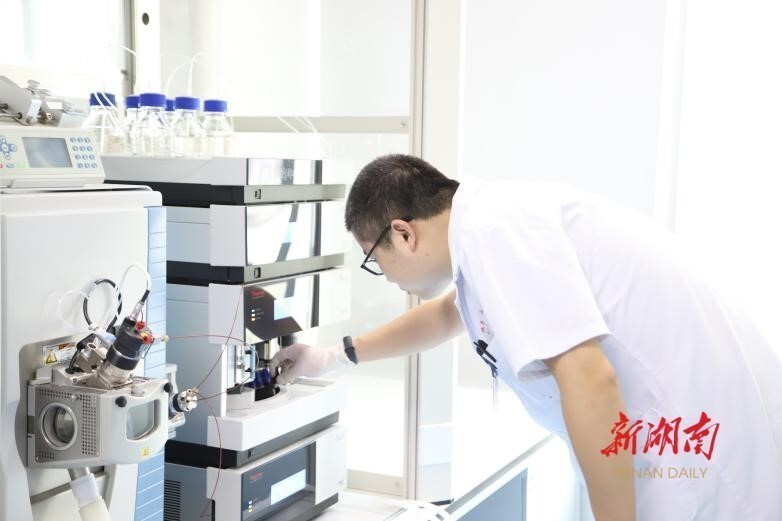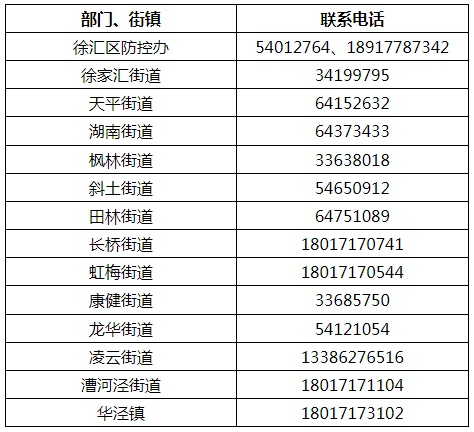Lin Lin Clinic | Is the pulmonary grinding glass nodule a lung cancer?What should I do if the physical examination suddenly finds the lung nodule?
Author:Guangdong Provincial Hospital Time:2022.08.18

Medical Guidance: Professor Lin Lin, Director of the Department of Division of Breathe and Critical Medicine, Guangdong Provincial Hospital of Traditional Chinese Medicine
[Open column] This column is a special issue column of the Department of Respiratory and Critical Medicine of the Traditional Chinese Medicine Hospital of Guangdong Traditional Chinese Medicine Hospital and Disciplinary leader, and Professor Lin Lin led by the team. Treatment and conditioning will introduce the knowledge of healthy life, daily health skills, common sense of lungs and lungs, and introduce lung nodules, lung cancer, interstitial lung disease, slow obstructive pulmonary, asthma, expansion of bronchies, various viruses and bacteria Sexual pneumonia, acute, chronic cough, allergic rhinitis and other types of respiratory disease prevention, treatment, daily conditioning and lung recovery.
The story of the 57th diagnostic room
Uncle Wu was a medical examination at the unit this year. He never expected that the results of the medical examination results CT showed that there was a "grinding glass nodule" in the back of the left tip of the left lung, about 4 mm in size. This scared Uncle Wu. Uncle Wu thought in his heart that it was a bit cough recently. Isn't this lung cancer? Intersection So I came to the outpatient clinic of Professor Lin Lin in Guangdong Province. As soon as I entered the door, I asked, "Professor, how did this physical examination suddenly say what grinding glass nodules? I heard that this is the manifestation of early lung cancer. What can I do? "
Professor Lin learned that although Uncle Wu had a cold some time ago, he still had a cough, but told him that the grinding glass nodule may not be lung cancer, or it may be inflammatory nodules. Essence Uncle Wu took the Chinese medicine for 1 month, and then reviewed the CT. The nodule had been obviously absorbed, excluding the possibility of early lung cancer.
What is grinding glass nodule?
As inspection technology is becoming more and more accurate, more and more patients have found small lung nodules, and even grinding glass nodules. The grinding glass nodule is in the CT examination of the lungs, which looks very vague, like "grinding glass".

There are many causes of pulmonary grinding glass nodules. Except for early lung cancer, lung inflammation, infection, fibrosis, or bleeding may all be manifested as grinding glass nodules. Among them, the grinding glass nodules that will gradually grow or appear into the "real shadow" can be malignant.
Is the lung -grinding glass nodule of the lung cancer?
Pulmonary grinding glass nodules 肺 lung cancer. The grinding glass nodules are divided into "benign" and "malignant". If you have other diseases such as pneumonia or a cold some time ago, a grinding glass nodule is also found, considering the possibility of inflammatory nodules. In this case, after anti -inflammatory treatment, nodules will significantly shrink and even disappear, which is very common.
Generally speaking, the possibility of benign nodules into lung cancer is very small. However, if a relatively large nodule, diameter is> 1cm, the possibility of malignancy is high; or the faster the nodule increases, the greater the possibility of viciousness; Also big.

The physical examination suddenly found the lung nodule, what should we do?
For the first time during the physical examination, the pulmonary nodules were found, and everyone should not panic first. Most of the lung nodules are benign, and the proportion of malignancy is relatively low.
If malignant, it will take a long time to grow up.
If it is a nodule with a low degree of malignant, the size is <5mm, and the CT is reviewed once in half a year. If the review has not changed or even reduces it, it is reviewed again at a time of 9 months to one year; if the nodules still have not changed significantly, consider benign nodules, no need to deal with too much, and the regular physical examination will be available every year.
If the size of the nodule is> 5mm, it is best to review the CT once every 3 months. If the nodule increases, increases, or mixed density changes, it is recommended to go to the hospital for specialty for treatment to actively treat it to perform pathological biopsy or surgical resection. If the diameter of the nodule is reduced or absorbed, the review time can be gradually extended.
While waiting for the review, Chinese medicine can be actively treated. Many patients' lung nodules can be reduced and disappeared through traditional Chinese medicine. It is recommended to go to the hospital to find a Chinese medicine doctor for dialectical conditioning, take Chinese medicine, and treat acupuncture, which has certain effects on treating the lung nodules.

At present, the cause of the lung nodule is still not very clear, but the number of patients who detect the lung nodules are increasing.
Professor Lin suggested that people who are over 45 years old can conduct physical examinations once a year. Stay away from the lung nodules, try not to smoke, avoid second -hand smoke, keep the living environment air clean and happy, and actively treat chronic diseases in various lungs.
Medical guidance: Lin Lin, chief physician, professor, doctoral supervisor of Guangzhou University of Traditional Chinese Medicine, director of the Department of Division of Breathe and Cympapture of Guangdong Provincial Hospital of Traditional Chinese Medicine, academic leaders, master of Chinese medicine, and Professor of Sinic Medical Masters, Professor Hong Guangxiang, and Professor Xun Enxiang. Professor Liu Weisheng, a famous Chinese medicine medicine in Guangdong Province. He is currently the chairman of the Fever Branch of the Chinese National Medicine Society, deputy chairman of the Chinese Traditional Chinese Medicine Society, vice chairman of the High School Respiratory Professional Committee, and chairman of the Director of Respiratory Diseases on Respiratory Diseases.
Good at: Clinical and basic scientific research on the treatment of respiratory diseases in combination of traditional Chinese and western medicine. It is good at the treatment of asthma, pulmonary inflammation, bronchial dilation, slow obstructive pulmonary cancer, lung nodules, acute and chronic cough, and various reasons for treating asthma. Diagnosis and treatment of respiratory diseases such as interstitial pneumonia and respiratory failure. ️ Self -management and lung rehabilitation treatment technology of respiratory diseases, as well as ️ ️ ️ Good at using traditional Chinese medicine syndrome differentiation to treat various difficulty diseases. ️ Good at physical balance and health conditioning.
Lead the formulation of "Guidelines for Slow Pulmonary Traditional Chinese Medicine Pulmonary Rehabilitation" and "Chinese Pharmaceutical Treatment of Adult Aposterity Clinical Application Guidelines". Participate in the formulation of many industry guidelines such as "Guidelines for the Diagnosis and Treatment of Chronic obstructive pulmonary disease (2011 version)" and "Cough Diagnosis and Treatment Guide (2015)". Won the first Chinese young female scientist, the National and Guangdong May 1st Labor Awards, the National and Guangdong March 8 Red Banners, the first outstanding female Chinese medicine practitioners in the country, the first national traditional Chinese medicine inheritance, the Ten Jie of Nanyue, and the excellent Chinese medicine clinical clinical of Guangdong Province Honorary titles such as talents and outstanding female science and technology workers in Guangdong Province. The editor -in -chief published 6 monographs and 4 invention patents. The scientific research results have successively won 9 National Science and Technology Progress Award, the Science and Technology Award of the Chinese Academy of Chinese Medicine, the Guangdong Provincial Science and Technology Award, and the Guangzhou Science and Technology Progress Award, and 3 invention patents. Disposal time:
On Tuesday afternoon, the seventh floor of Da De Road General Hospital of Guangdong Provincial Hospital of Traditional Chinese Medicine Hospital
On Thursday morning, the third floor of the Ersha Island Hospital of Guangdong Provincial Hospital of Traditional Chinese Medicine Hospital needs outpatient clinics
Introduction to the Team of the University of Science and Technology of Disposal and Critical Critical Medicine
The Department of Respiratory and Critical Critical Medicine of Guangdong Provincial Hospital of Traditional Chinese Medicine was established in 1986. It has been built into a discipline with strong levels of Chinese and Western medicine for more than 30 years, strong comprehensive service capabilities, and high academic status in the industry. The key specialty of the State Administration of Traditional Chinese Medicine enjoys a high popularity in South China and even nationwide.
The specialty focuses on deepening clinical and theoretical mechanisms such as chronic lung diseases such as chronic lung block, bronchial asthma, bronchial asthma, bronchial expansion, lung cancer, lung nodule, interstitial pulmonary disease, pulmonary hypertension, chronic respiratory failure, sleep respiratory disorders and other chronic diseases. Through excavation and inheritance of ancient and modern experience, developing series of specialties and intrapetic medicines, the academic level is ahead of the National Traditional Chinese Medicine Hospital.
The specialty team is good at the prevention and treatment of chronic respiratory diseases, covering core content such as early prevention, treatment, rehabilitation, and chronic disease management of the disease. Specialty Chinese medicine has distinctive characteristics. It carried out the treatment of traditional Chinese medicine such as self -blood therapy, acupuncture acupoints, acupoint injection, and traditional Chinese medicine lung rehabilitation. It has a curative effect on chronic cough, chronic obstructive pulmonary, bronchial asthma, bronchial expansion and other diseases. At the same time, modern diagnosis and treatment technologies such as lung function testing, multi -guided sleep monitoring, bronchial mirror examination, FENO, and induction of sputum cytological examination are carried out to provide patients with a diversified and personalized Chinese and Western medicine combined diagnosis and treatment services.
Supply: Division of Respiratory and Critical Medicine of Guangdong Provincial Hospital of Traditional Chinese Medicine
Executive editor: Wu Yuan Tuan
Review school pair: Zhang Liangwen
Editor in charge: Song Liping
- END -
Is children's cosmetics safe?Experts teach you to buy correctly

Emergency notice: such personnel stopped flowing immediately!

The reporter learned from the press conference of the Shanghai New Crown Pneumonia...